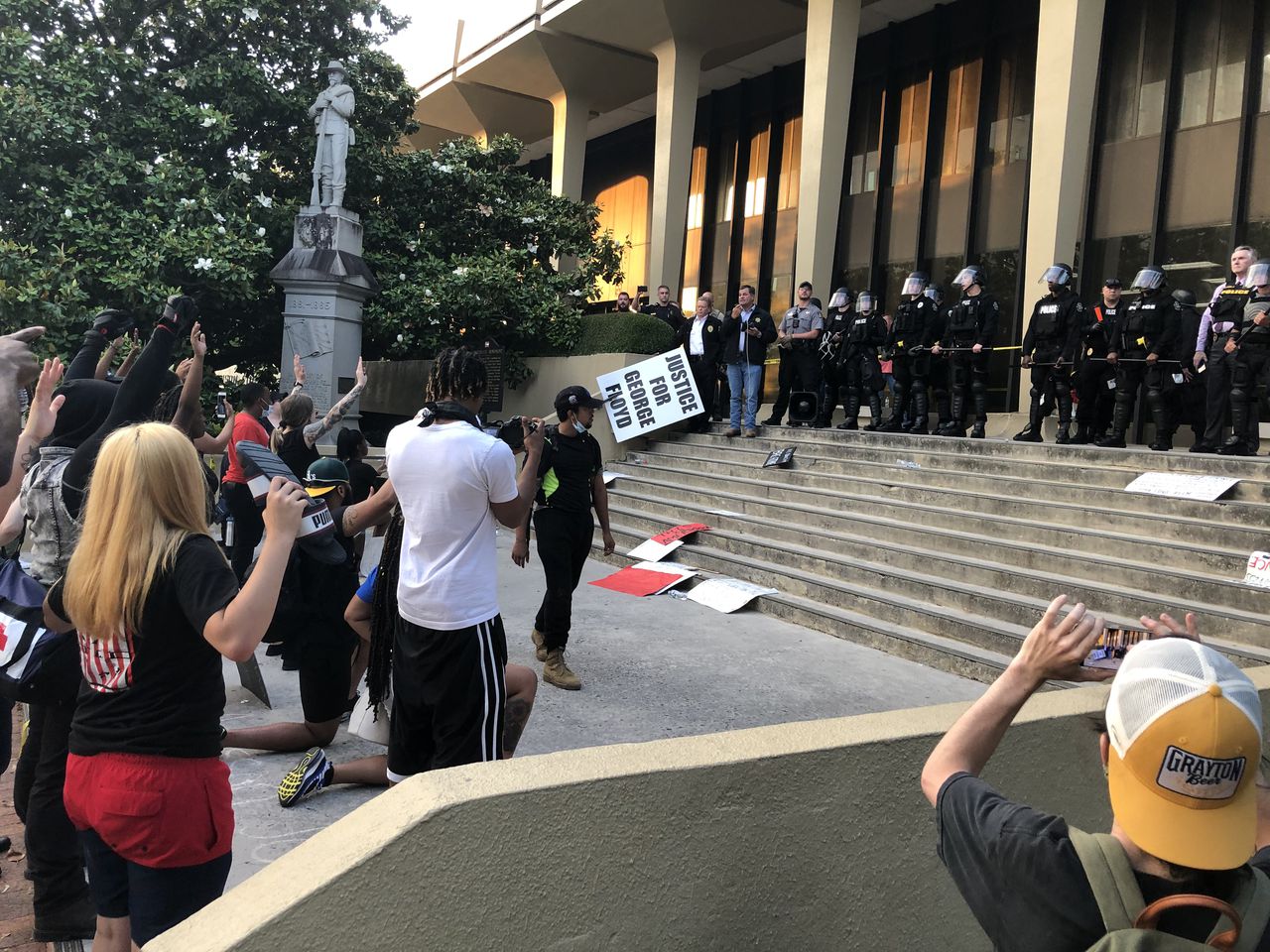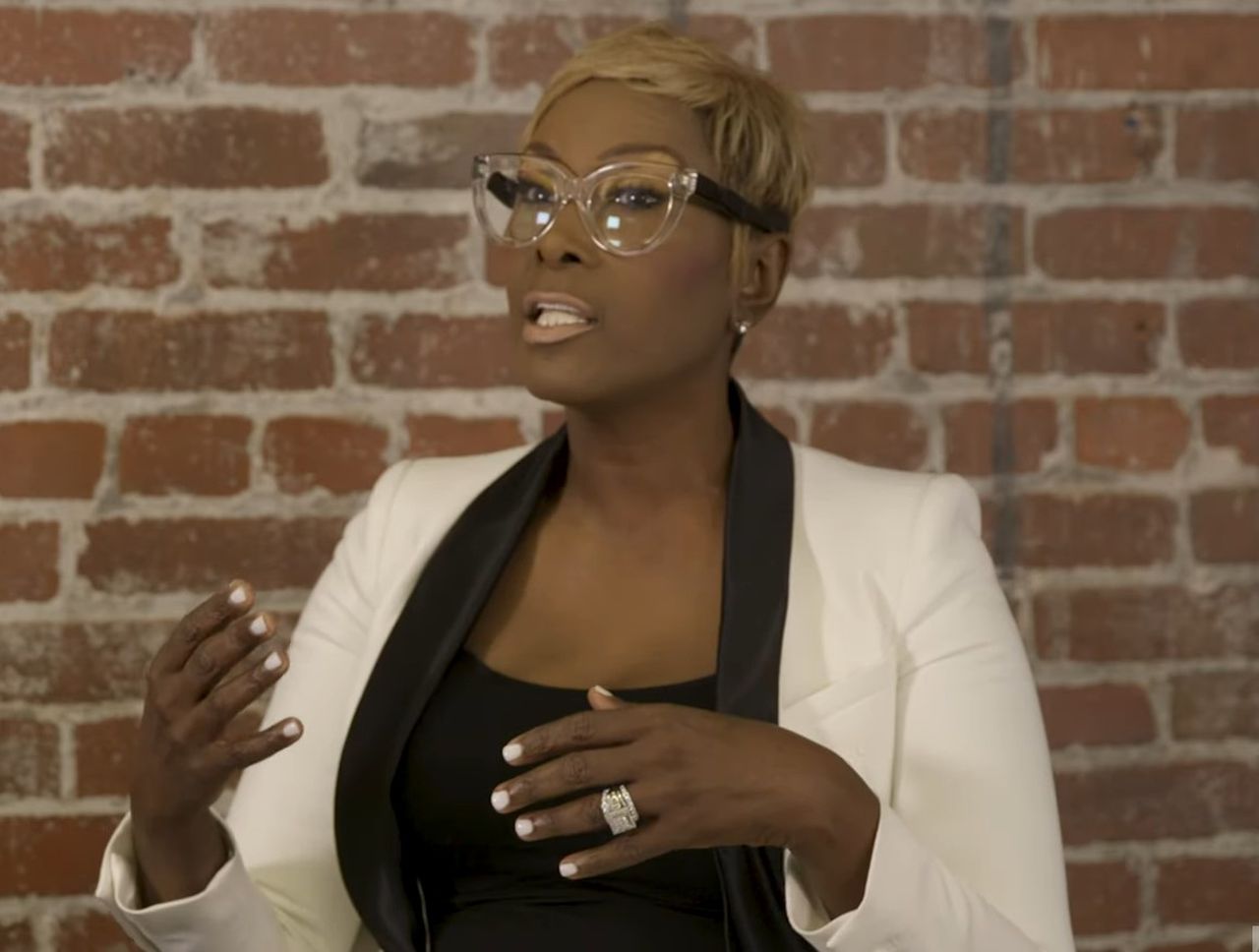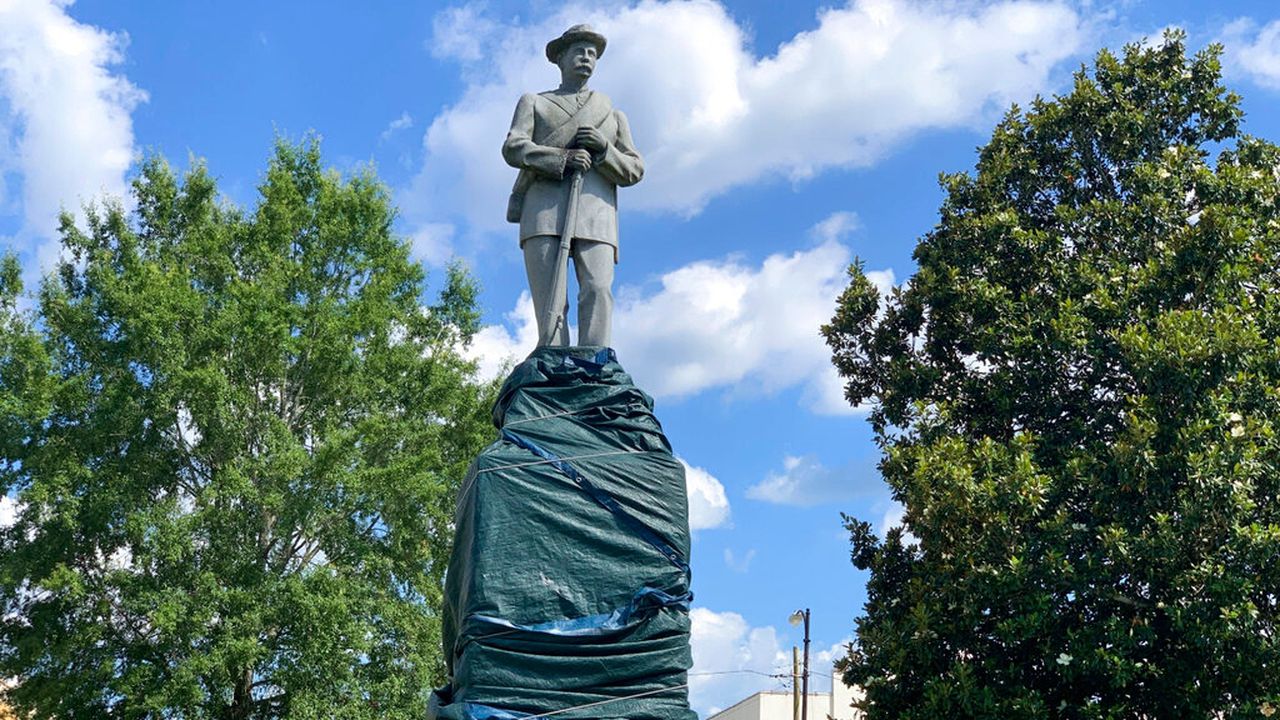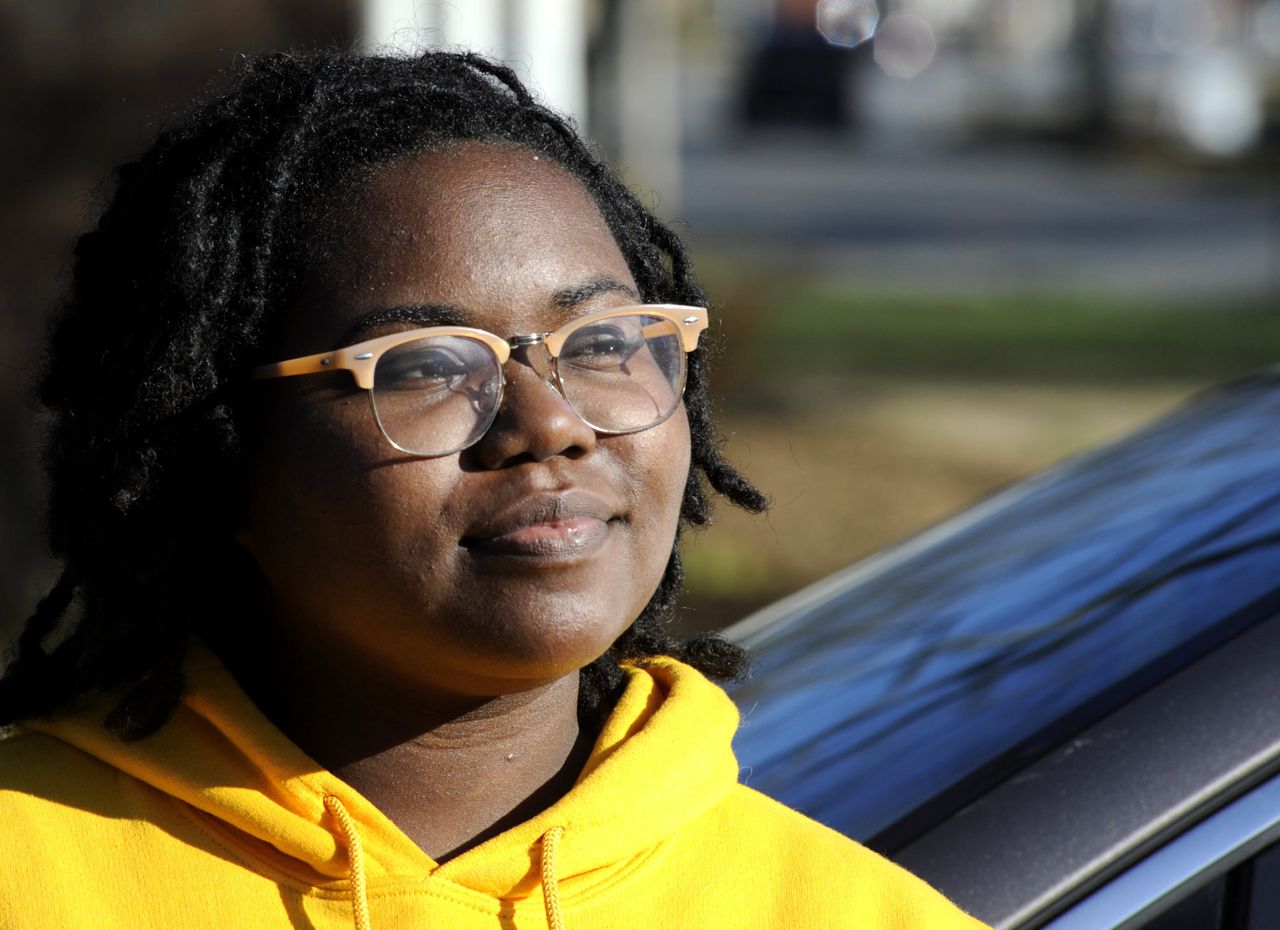Resolution sparks renewed focus on Confederate monuments at courthouses
Earlier this month the American Bar Association urged state and local governments to remove Confederate memorabilia and other symbols from courthouses.
It’s being met with skepticism in deeply conservative Alabama, where 180 live memorials to the Confederacy still exist including nearly two dozen at county courthouses.
The ABA resolution could spark renewed attention on the existence of Confederate monuments and images near the halls of justice.
“These racist relics do not accurately reflect our shared American experience and, most importantly, promote the exact opposite of what equal justice should look like,” said Tafeni English-Relf, director of the Montgomery-based Southern Poverty Law Center’s Alabama State Office.
Critics are dismissing the ABA’s resolution, and the organization itself as having a left-leaning bent on highly-charge cultural issues like gun control, abortion, and same-sex marriage.
Representatives with the Sons of Confederate Veterans also blast further pursuits to have Confederate images removed in Alabama as a waste of taxpayers’ money. They also claim they have the law on their side: The Alabama Memorial Preservation Act, approved in 2017, making it illegal for anyone to remove or alter an “architecturally significant monument” 40 years or older from a public place. A $25,000 one-time fine is often associated with a monument’s removal.
The Alabama State Bar Association is also keeping its distance from the ABA resolution. A spokeswoman with the Alabama State Bar says that while the ABA is a “voluntary trade association of lawyers” free to take a position on issues, the Alabama State Bar is a licensing and regulatory agency required to comply with state and federal laws. That prevents it from taking public positions on policy issues.
Melissa Warnke, a spokeswoman for the Alabama State Bar, said removal of “certain Confederate era symbols” implicates the 2017 law.
Courthouse battles
Unique Morgan Dunston pauses in her hometown of Albertville, Ala., on Wednesday, Dec. 9, 2020, before a protest against a Confederate monument and flag located on the lawn of the Marshall County Courthouse. Transformed by leaving the virtually all-white town where she grew up, Dunston has been leading the demonstrations since August. (AP Photo/Jay Reeves)AP
The battles over Confederate monuments outside or near the courthouses are not quieting, even about three years after a spirited debate to have a Confederate monument relocated from the Madison County Courthouse in Huntsville.
Some of the recent disputes are playing out within courtrooms:
- A Macon County judge ruled last month that a Confederate soldier monument be removed from a park in Tuskegee that is a “stone’s throw” from the county courthouse. An attorney representing a Confederate heritage group is appealing the ruling to the Alabama State Supreme Court.
- A judge in Lauderdale County in November dismissed a lawsuit seeking an injunction from removing a Confederate monument in front of the county courthouse. The judge ruled the lawsuit moot, saying that Lauderdale County officials confirmed they have no intentions of moving the monument and will fully comply with state law.
- Marshall County officials built a fence around a Confederate monument outside its courthouse in Albertville, and in late 2020, adopted a controversial resolution regulating protests on county property.
Unique Dunston, founder of Reclaiming Our Time – the organization pushing the hardest for the removal of two Marshall County monuments – said she is appreciative of the ABA’s resolution but does not feel it will carry much sway in conservative counties.
Marshall County is a staunch Republican area in which over 83% of voters in 2020 voted for former President Donald Trump.
Said Dunston about the ABA’s resolution, “it is another opportunity to continue the conversation concerning the Confederacy and its symbols of white supremacy. We have not given up on our efforts to have both Confederate monuments in Marshall County relocated.”
Whose Heritage?

Police prepare to advance on protesters during a George Floyd protest at the Madison County Courthouse on June 1, 2020. The Confederate monument is seen in the background. (Paul Gattis | AL.com)
Confederate heritage groups opposed to relocating the monuments have a different viewpoint, arguing that the monuments do not reflect biases against racial or ethnic minorities.
Ralph Long, an original member of the Heritage Protection of North Alabama (HPNA) and a plaintiff in the Lauderdale County lawsuit, said the Confederate memorials are not different than the U.S. flag.
“The U.S. flag flew over legalized slavery in the U.S. for 90 years,” Long said in response to the ABA’s resolution. “The U.S. flag flew over military segregated by regulations for 83 years. That is blatant racism. As soon as the ABA considers removing the U.S. flag, we might consider removing Confederate memorabilia.”
Ed Kennedy, the Madison County representative with HPNA, argues the Confederate monuments were placed by “our ancestors who intentionally put them so people would be reminded of the immense losses of our families and our battlefields.”
He said, “There was no other reason to place them except to memorialize them.”
The SPLC, which has authored three editions of “Whose Heritage?” that explores the struggle to remove Confederate monuments, takes aim at what they call the “myth” about the “Lost Cause” narrative of the Civil War in an attempt to distance the South and the Confederacy from slavery and to reintegrate rebels as honorable fighters.
The monuments, the SPLC and others say, were erected by white Southerners in response to Reconstruction and during the Jim Crow era. The SPLC has called them “symbols of hate.”
And outside of courthouses, critics believe they intimidate.
“When positioned in front of courthouses, judge chambers and other sites of the judiciary, these Confederate symbols make a mockery of the notion of a color-blind, race-neutral legal system,” said Hilary Green, a former professor of history at the University of Alabama who has dived into the Confederate monument controversy and created an interactive map in 2020 to locate sites where monuments were removed or renamed.
Green, who is now a professor of Africana Studies at Davidson College in North Carolina, said she applauds states taking action to have the monuments relocated from courthouses. North Carolina, according to media reports, has 42 monuments at county courthouses.
“Alabama should follow the lead of its peers, especially, if they are committed to a fair, non-biased legal system and judiciary,” she said.
Legislative matters
Camille Bennett, who has headed up Project Say Something and has spearheaded efforts to have the Confederate monument relocated from the Lauderdale County Courthouse, said while the ABA’s resolution “is a step in the right direction,” the biggest hope for change lies with the Alabama Legislature.
“Our only hope right now is for the Memorial Preservation Act to be overturned somehow or there be some changes in that legislation,” she said.

Rep. Juandalynn Givan pushed a bill that would allow cities and counties to relocate Confederate monuments.
The Legislature, ruled by a Republican supermajority, has done little in recent years to address the law. An effort by state Rep. Juandalynn Givan, D-Birmingham, to allow cities and counties to request permission from a state committee to move the monuments to another location – such as a park or a state agency land for preservation – was shot down by a 6-4 vote in an Alabama House committee in 2021.
State Senator Clyde Chambliss, R-Prattville, and Senate Minority League Bobby Singleton, D-Greensboro, also pitched in 2021 a proposal that would set up a process to relocate Confederate monuments to Confederate Memorial Park in Marbury. But that proposal did not advance, and it’s unclear whether it will resurface during the 2023 legislative session. Neither Chambliss nor Singleton could be reached for comment.
Even efforts to increase penalties for removing Confederate monuments have stalled. Former State Rep. Mike Holmes, R-Wetumpka, once pitched a bill to increase fines for removal from a flat $25,000 to $10,000 a day. But that bill also did not go anywhere.
No legislation has surfaced to address the monuments at the courthouses.
Tuskegee focus
Most of the Confederate monuments remaining near the courthouses in Alabama are in counties that are mostly white and are governed by mostly Republicans.
Macon County is different. Located in Alabama’s “Black Belt” region, the county is 80% Black, while Tuskegee is 97% Black. The monument has been the subject of on-and-off protests for years and attempts to remove it date back before the recent national push to have Confederate monuments and imagery removed.
Circuit Judge Steven Perryman ruled last month that the site where the Confederate monument has stood since 1909 should revert to the Macon County Commission.
Perryman’s ruling was based on the terms of a 1906 deed that gave the space to the Tuskegee Chapter of the United Daughters of the Confederacy for the purpose of maintaining a “park for white people” and “maintaining a monument” to Confederate soldiers.
Perryman, in his ruling, said there is no evidence the space has been maintained a segregated park. He said the terms of the 117-year-old deed shows that the land should revert back to the county since it was not being used as a “park for white people.”

A Confederate monument in Tuskegee, Ala., is shown with its base wrapped in tarps on June 12, 2020. A judge ruled in January 2023, for structure and its surrounding park is ongoing and will be considered by the Alabama Supreme Court. (AP Photo/Kim Chandler)AP
Jay Hinton, a Montgomery-based attorney representing a Confederate heritage group fighting against the ruling, said he does not believe the deed is enforceable, adding that the Tuskegee chapter “for 315 years, has not kept people off the park.”
“We’ve allowed people to use it for all of those years,” Hinton said. “The court ruled that we violated deed language because we didn’t keep Blacks off the park. It’s a horrific ruling. Society ought to think so as well.”
Macon County Commission Chairman Louis Maxwell said the focus for Tuskegee is for the county to take ownership of the property, and then decide “what goes on the property.” He said the county commission is “not interested” in seeing the monument destroyed and will work with groups to have it relocated.
“We contend this is public property and it’s for the citizens of Macon County,” Maxwell said. “Our goal is we want to get this matter resolved once and for all.”
He also claims that the Tuskegee Chapter of the United Daughters of the Confederacy “no longer exists,” and there is no provision to have it transferred to a Confederate heritage group not located in Macon County.
“The closest (similar group) we found was in Andalusia,” he said.
Attorney Fred Gray Jr., who is working with his father – civil rights icon Fred Gray Sr. – to get the issue resolved, said he finds it troubling the Tuskegee chapter no longer has a member living within the county.
“It just goes to show that they just want to control the very image of what goes out from this particular city,” said Gray.
Maxwell said he is concerned about having the case appealed to the Alabama State Supreme Court, where all 10 justices are white, and a Democratic justice has not served since 2011.
“I pray they will just be fair and look at the facts and make a decision based on that,” he said.
Gray said he will focus on the merits of the case, and the questionable deed.
But he said a Confederate monument near the courthouse underscores a problem.
“It certainly goes against true justice for all the people,” Gray said.
